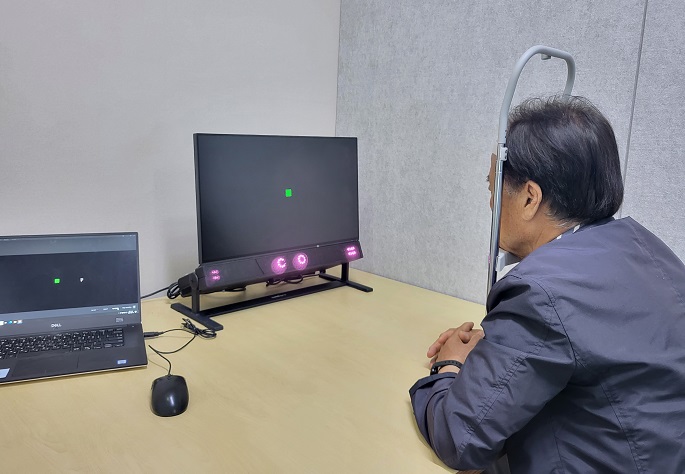
A patient is participating in an eye-tracking test in this photo provided by the Korea Institute of Oriental Medicine.
SEOUL, June 23 (Korea Bizwire) — Korean researchers have discovered a method to differentiate high-risk dementia patients from others by analyzing eye movement patterns.
The research team from the Korea Institute of Oriental Medicine and Chosun University monitored and analyzed the eye movements of 594 senior participants who took part in a five-minute cognitive study on a computer.
Out of the participants, 428 received a clean bill of health, while 166 were diagnosed with mild cognitive disorders.
Using a machine learning model, the research team developed and evaluated the performance of three different classification models that incorporated various combinations of data.
The team compared the performance of three models: one combining population statistics information and eye movement data, another combining population statistics information and mini-mental state examination (MMSE), and one that combined population statistics information, MSSE, and eye movement data.
The results demonstrated that the area under the receiver operating characteristic (AUROC) scores for each model were 0.752, 0.767, and 0.840, respectively.
MMSE is a simple neuropsychological assessment tool used to evaluate cognitive performance. An AUROC score measures the performance of each classification model.
According to the research team, a classification model is considered good if its AUROC score exceeds 0.8 points.
H. M. Kang (hmkang@koreabizwire.com)






